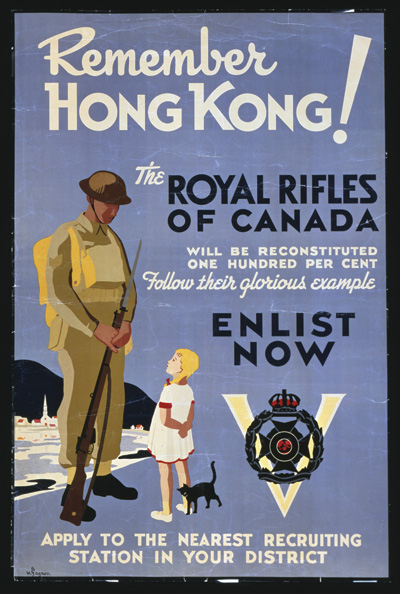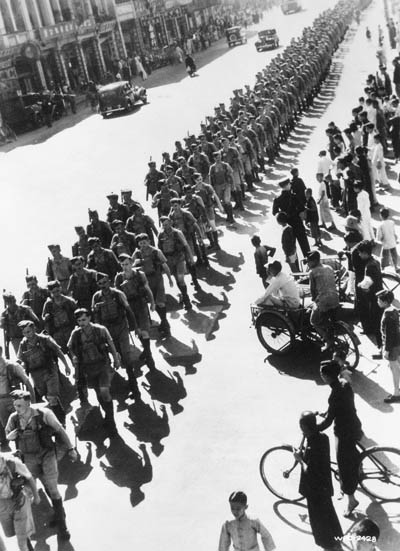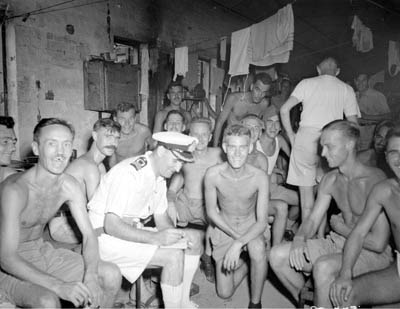As a volunteer at the Royal Ontario Museum in Toronto, I know that sometimes, finding out the true information about an artifact is easier said than done. This is particularly the case once the curators start working with donated items: things that sometimes come with stories attached to them which might be intriguing - and sound very, very cool! - but might not actually be the historical reality. Family heirlooms, objects acquired by collectors who lived and died centuries before the date of acquisition (and oftentimes with shoddy record-keeping habits)...all of these could potentially lead historians to come away with more questions than answers.
The story I'm about to tell you is a long one, with considerable historical background needing to be explained beforehand, so please bear with me. It is also, in fact, not from the Royal Ontario Museum. Instead, it features a little historical mystery that I've recently come across on a recent trip to Montreal and Quebec City. (Yes, the so-long-desired research trip that
I'd talked about in an earlier post has finally come.) While I was in Montreal, I had the opportunity to visit the Château Ramezay in the historic part of the city.
 |
| View of the Chàteau Ramezay from across the street |
The Château Ramezay (lit. "Castle Ramezay" in French) does not look like a very grand, imposing building - at least not when compared to similar "castles" elsewhere in the world. But in terms of French Canada, a place like this was already quite luxurious. The property was first owned by the Ramezay family, who were part of the colonial administration in 18th-century Montreal during the French regime; they were, in other words, part of the elite. After this, the building was occupied by a trading company, before becoming the official residence for the British Governor of Quebec whenever he was in the city.
 |
| Occupants of the Château Ramezay over the years; immediately relevant to us are the first four entries. |
But it is the fourth entry, "Armée des États-Unis 1775-1776" that I am going to focus on here. From the fall of 1775 until the fall of 1776, the Continental Army in what is now the United States attempted to invade Quebec. The details of that campaign and how they played out would be better saved for another day, but for our intents and purposes, the Americans successfully took and occupied the city of Montreal from November 1775 to June 1776, when the British finally drove them back.
During this occupation, there was, in fact, a delegation sent to Montreal from the Continental Congress. Their hope was to be able to draw up support for their cause from the local French-Canadian population, but by the time they arrived on April 29, 1776, a winter's worth of increasingly sour relations between the French-Canadians and their (mostly) English-American occupiers meant that this attempt was doomed from the beginning. By the end of May, the entire delegation (and then some) had left Montreal for the American colonies to continue their efforts elsewhere - and ultimately help pave the way towards the Declaration of Independence in July that same year.
So where do "Mr. and Mrs. Thomas Walker" come into all of this? A lot of it can be seen in this document held at the Château Ramezay, which served as the Continental Army's headquarters during the occupation:
 |
| Letter dated to May 11, 1776, at the Château Ramezay, written by delegates to Montreal from the Continental Congress |
The text may be hard to decipher, but fortunately, the curators at the Château Ramezay included a transcription in the display:
Montreal, 11th May 1776
Dear Sir,
We desire that you will shew to Mrs Walker every civility in your power and facilitate her on her way to Philadelphia, the fear of cruel treatment from the enemy on account of the strong attachement to, and zeal of her husband in the cause of the united Colonies induces her to depart precipitately from her home; & to undergo the fatigues of a long and hazardous journey. We are sorry for the occasion of writing this letter & beg your attention to alleviate her distress; your known politeness and humanity, we are sensible, without this recommendation from us, would prompt you to perform the friendly office. We are with great esteem & sincere regard for yourself & family.
Your affectionate hum. Servts,
Samuel Chase
Charles Carroll of Carrollton
B. Franklin
(And, if anyone is wondering, yes, "B. Franklin" is who you think he is! Chalk that up for something cool: a 1776 document written by Benjamin Franklin held in Montreal - and I saw it firsthand.)
Now, safe passage, as this document asks for on behalf of Mrs. Walker, was certainly needed. As implied, Thomas Walker had been, ever since he first arrived in Montreal from Boston in 1763, a strong supporter of what he held to be the proper rights of British subjects. What this meant is that he was an advocate for the presence of elected government and other benefits that many American colonists had become accustomed to by the 1760s. Ultimately, this led to considerable friction between Walker and the British colonial administration: Walker was strongly opposed to the Quebec Act in 1774 (which, while granting a variety of civil liberties to the Catholic French-Canadians, also firmly denied the request of English-Canadian merchants like Walker for an elected assembly) and, by 1775, was openly in favour of the Patriots fighting in the Thirteen Colonies. He was not only vocal in his opinions, but took various modes of action: meeting with other American sympathizers in the city, urging Canada to join in the Continental Congress, and ultimately recruiting members of the local population to fight for the Patriots against the British. It was Thomas Walker, in fact, who hosted the delegation from Congress in his house during their stay in the spring of 1776, and he left along with them - the reason why the letter speaks of Mrs. Walker specifically is because Mr. had already gone the night before!
With such a fascinating story to tell (just the idea that Canada was, in some way, involved in the American Revolution might be news to some), it's no wonder that, in 1905, the Château Ramezay received a pair of portraits from a donor who believed them to be depictions of Mr. and Mrs. Thomas Walker.
That's all fine and dandy - and, again, it makes for a great story - but when I saw these two portraits together with a placard giving a short spiel about Thomas Walker's involvement in the American Revolution, I was skeptical. Unconvinced, if you will. I don't doubt the veracity of the historical events described - I had seen them in enough sources whilst working on my
Hetalia fanfiction years ago to know they were true - but I'm not convinced these two portraits are of the Walkers at all. Or, at least, not the Walkers the Château Ramezay wanted.
There area few reasons for my skepticism. First of all, the Château Ramezay said that Thomas Walker lived from 1717 to 1788, although it did not offer any such dates for Mrs. Walker (née Jane Hughes, by the way). Even allowing for a slight margin of error on the date of birth, this means that by 1775/1776, we would be dealing with a man well into middle age, at least. Of course, these portraits could be of the Walkers in their youth, but that leads to an even greater problem, as far as I am concerned. From everything that I could see - the style of painting, the subjects' appearances (dress, hairstyle, etc.) - these two portraits look to me to be from the early 19th century instead of the mid- to late 18th.
All this means that this one small corner of the Château Ramezay left me with far more questions than answers. Are these posthumous portraits? That's certainly plausible. I could imagine, say, a descendant wanting an image of his/her ancestors several decades down the road. But if not, then who are this couple - and how did the donor of these paintings come to not only believe they are Mr. and Mrs. Thomas Walker, and how did he convince the curators of the Château Ramezay of such?
The thing I love about historical mysteries is that they can be a lot of fun to pursue. If the time and opportunity arose for me to do that with these two paintings, I certainly would. In the meantime, if anyone reading this is interested, perhaps you'd like to let me know some of your ideas. Who knows? Maybe you'll have the answers after all!
Image Credits
All photographs (c) Kita Inoru







